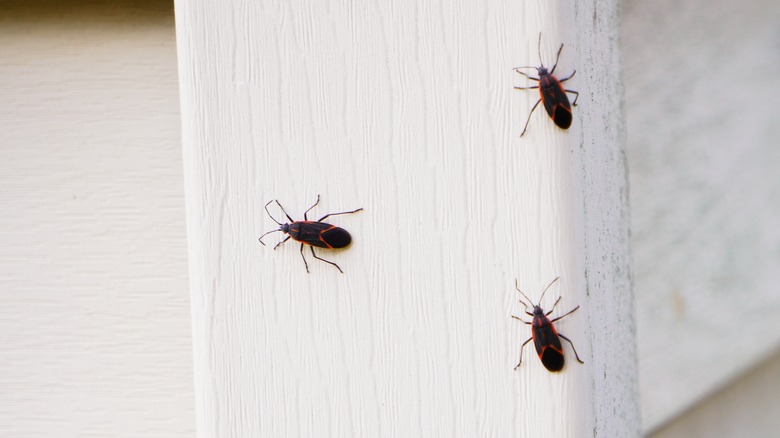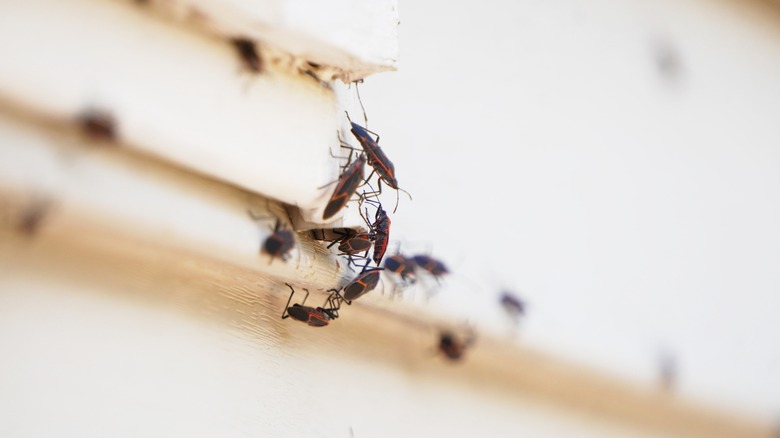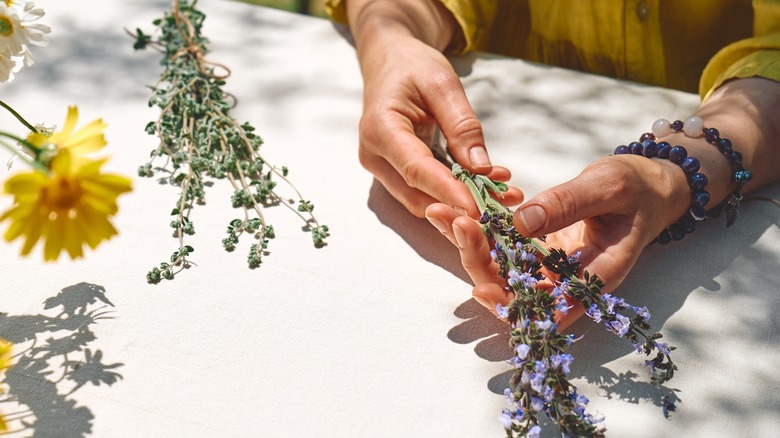The Popular Herb That Will Send Boxelder Bugs Running From Your House
If you have a boxelder bug problem, consider sage as an insect-fighting champion. Originating from the Mediterranean region, this perennial herb is a member of the mint family. It has bushy growth with fine-haired leaves, and can reach 3 feet tall. When you crush sage leaves, the scent can best be described as medicinal, an olfactory signature that enhances your cooking and serves a practical purpose in repelling insects like boxelder bugs. The strong smell released upon crushing the leaves is also a testament to the potency of its active compounds, linalool and estragol.
Together, these substances function as fumigants, repellents, and even insecticides. If you're unfamiliar with the term, linalool is a type of terpene alcohol found in aromatic plants. It comes with attributes that bugs find intolerable but are completely harmless to humans. There's scientific muscle behind these claims, too. Numerous studies validate the effectiveness of linalool and estragol, lifting sage from its status as just a kitchen herb to a validated, scientifically supported insect repellent. Its partner in crime, estragol, works just as well to ensure your home becomes a no-go zone for boxelder bugs.
Beyond its bug-fighting capabilities, let's not forget the aromatic experience sage brings into the equation. No harsh chemical smells here; instead, sage permeates your home with its distinct, earthy aroma.
What are boxelder bugs, and why do they come to your home?
Boxelder bugs are black insects adorned with unique red markings on their stomachs. With a length of about half an inch, these bugs are easily noticeable. They become especially active in warm seasons, but as soon as the temperature drops, they make a beeline for the cozy warmth of your home to overwinter. Though they primarily hang around boxelder trees (hence the name), you'll also find them loitering near maple and ash trees.
Now, while these bugs pose no direct threat to you or your pets, don't underestimate their potential for annoyance. If you crush them, they emit an off-putting odor that's far from pleasant. Even worse, their fecal matter has a knack for staining various surfaces in your home. These insects are even more aggravating because they easily acclimate to new environments, rapidly turning from occasional visitors to permanent house guests. You'll often find them basking in the sun on windowsills or walls and they are drawn to heat sources in your home.
Given that they're not destroying your property outright, you might consider letting them be. But that would be a mistake. Their unwelcome presence often indicates other issues that need your attention. Your home may have some insulation gaps, or perhaps a nearby boxelder tree is their breeding ground. Either way, these bugs point to a problem you'll want to solve sooner rather than later, and this is when a sage insect repellent comes in.
Crafting a sage repellent to keep boxelder bugs at bay
To keep boxelder bugs at bay, plant sage in your garden, preferably around the perimeter of your home, to create a natural barrier that acts as a repellent. But what if the bugs are already inside? No worries; a sage-based repellent spray comes to the rescue. Making one is straightforward. Boil a handful of dried sage in water until the liquid darkens. Just a heads-up: the efficacy of the repellent is directly proportional to how well the water has absorbed the sage compounds, so don't cut short the boiling process. Strain this infused liquid, let it cool, and pour it into a spray bottle. Your DIY sage repellent is ready to go — target areas where boxelder bugs congregate. We're talking about windowsills, door frames, and baseboards. A liberal spray in these zones typically sends the bugs packing. Also, for a preventive approach, spray around potential entry points.
Consider adding a few drops of sage essential oil to your concoction if you want an even stronger solution. But remember, sage essential oil is concentrated, so a little goes a long way in ramping up your spray's effectiveness. Not into sprays? Sage sachets work well, too. Fill small fabric pouches with dried sage and place them strategically around your home, focusing on areas most frequented by these bugs. It's a subtler approach but just as effective, and it leaves your home smelling great to boot. With sage in your arsenal, boxelder bugs don't stand a chance.


